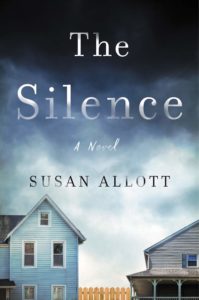 This is a very melancholy novel about people who live near each other, yet in isolation, thanks to a profound lack of communication. It’s set in Australia in the late 60’s, with a portion in the late 90’s. Two couples live side by side in a new neighborhood, right on the ocean. Louise and Joe, immigrants from England, live in one house with their daughter, Isla. Next door are Steve and Mandy, who are childless. Mandy often looks after Isla.
This is a very melancholy novel about people who live near each other, yet in isolation, thanks to a profound lack of communication. It’s set in Australia in the late 60’s, with a portion in the late 90’s. Two couples live side by side in a new neighborhood, right on the ocean. Louise and Joe, immigrants from England, live in one house with their daughter, Isla. Next door are Steve and Mandy, who are childless. Mandy often looks after Isla.
As the book opens, the adult Isla gets a call from her father, who says the police have been by to discuss Mandy, who had disappeared from the neighborhood many years ago. The central nugget of suspense in the novel concerns the relationships between the neighbors and between the couples themselves. What happened in the past that caused Mandy to disappear? Why would Isla’s father, who seems devoted to his family, have had anything to do with her disappearance?
Isla returns home to Australia from London. She is newly sober and comes home to a father who is an active alcoholic, and a bitter mother who resents everything about him. Cataclysmic things happen to each couple through the course of the story.
Mandy is unhappy in her own marriage, thinking she’s falling out of love with a man who desperately wants a child. As the book proceeds, her husband, Steve’s, job becomes a larger part of the equation. In the 1960’s, the Australian government took Aboriginal children from their homes and “re-housed” them. It’s much like the shameful practice in the United States in a similar time period where Native American children were taken from the families and sent to boarding schools where they were “westernized”. Both of these practices left a huge swath of heartbreak, trauma, and cultural disruption, and in Australia, these children are referred to as the lost generation.
Steve is becoming desperate about his “job” taking children, which he is starting to feel is plain wrong. He’s part of a family where many of the men have served in the police force but he’s at a breaking point. Mandy is having a hard time understanding it.
Because neither Steve and Mandy or Joe and Louisa can communicate straightforwardly, and in fact, keep much to themselves, their relationships are difficult and unhappy. Neither are they able to communicate with one another as neighbors, though Louise appreciates Mandy’s help with Isla and the two women are friendly.
This is a beautifully written and concise novel, and the relationships are portrayed in a crisp manner. It saves the book from being overwhelmingly heartbreaking. Because the author does not dwell on the children being removed from homes in a great amount of detail, she allows the reader to take in this horrible process to a certain degree.
As a novel, it’s a lovely effort. It’s a beautiful portrait of families and of marital dynamics. As a mystery, it’s less successful, as the suspect pool is tiny, and the precipitating event becomes more and more obvious as the book unfolds. It’s also atmospheric and evocative of a particular time and place – the portions set in the 60’s were the most successful. And it’s certainly a look at a time period, place and practice that were unknown to me and that I found fascinating. It hung around in my head for quite a while after finishing it.